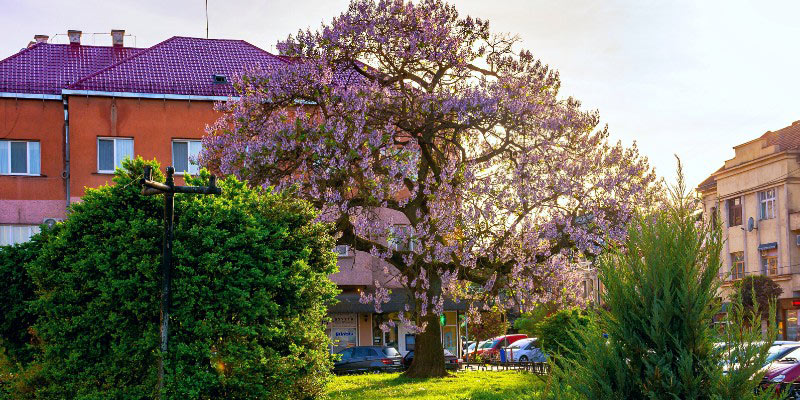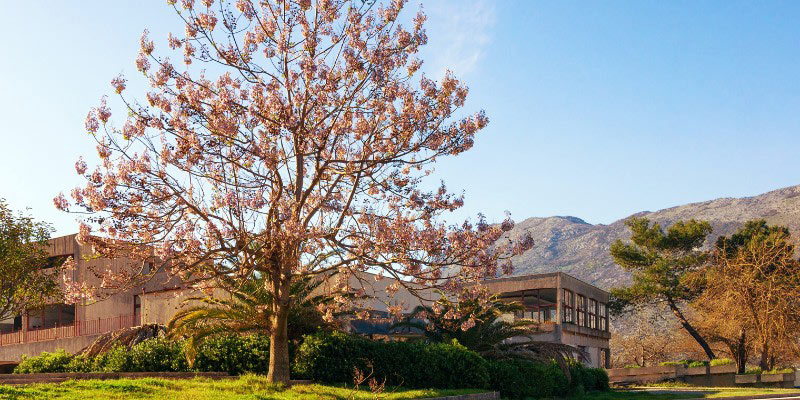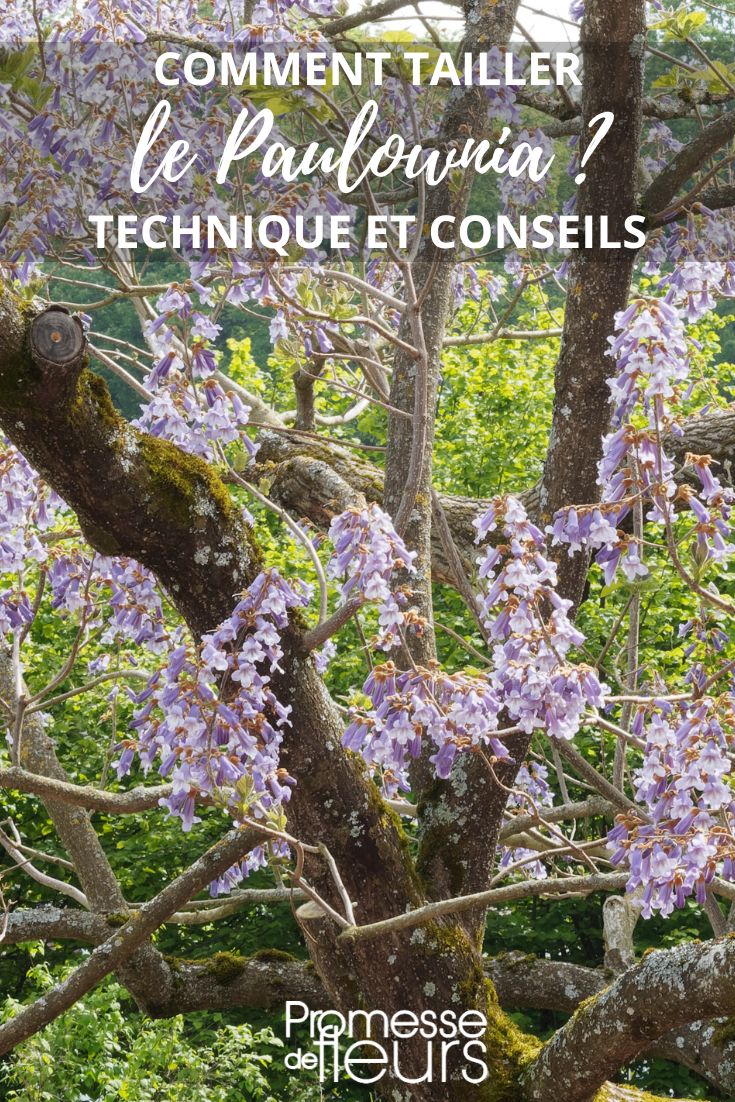Paulownia, also called Imperial tree, is a fast-growing tree prized for its large leaves and spring flowering. It bears in April-May superb clusters of mauve flowers, in elongated bell-shaped blooms. It forms a tree with a very elegant habit and provides dense shade. However, for it to thrive fully and maintain an attractive shape, it is important to prune it regularly. In this tutorial we give all our tips to prune it properly!
For full information on Paulownia and its cultivation, consult our complete sheet: "Paulownia, Imperial tree: Planting, cultivation and care".
Why pruning Paulownia?
Pruning Paulownia is not essential, it can quite well do without, however pruning can be useful to maintain a harmonious, balanced habit. It helps limit size somewhat, particularly in small gardens. By removing damaged, diseased or poorly positioned branches, pruning sanitises the tree and reduces risk of disease. It also encourages generous flowering. Finally, it helps to aerate the branches, allowing air and light into the centre of the tree.
It is also possible to prune Paulownia as coppice shoots, cutting it back to ground level each year. This keeps it at shrub size. This encourages the emergence of very large leaves but prevents the production of flowers.

When to prune Paulownia?
Best time to prune Paulownia is late winter, between February and the end of March, just before growth resumes. This allows the tree to heal its wounds before spring arrives. It is also possible to prune Paulownia in summer, after flowering, but avoid pruning too late, as this could delay growth the following year.
How to prune Paulownia?
- First, check that your pruning tools are well sharpened, and disinfect them with alcohol to avoid spreading disease.
- Remove dead, diseased or misshapen branches, cutting them back to their point of insertion on the trunk or on a main branch.
- Next, prune branches that cross or rub against each other: this prevents wounds and disease. You can also remove those that grow towards the inside of the tree, as they can impede development of other branches and limit air circulation.
- Shorten main branches: if you wish to limit the tree's height, you can shorten main branches by one-third to one-half of their length.
- Remember to step back regularly to view the overall shape of the tree and adapt pruning accordingly.
- Make clean, angled cuts, just above an outward-facing bud, to encourage growth in the desired direction. You can also apply healing mastic to larger cuts to prevent disease.
If space is limited or if you simply want a Paulownia with very large leaves (sacrificing flowering), feel free to prune it as coppice shoots, it will tolerate this without problem. In that case, prune it each year at ground level, leaving only 2 or 3 buds at the base.

Required equipment
- A pruning shear: for cutting fine branches and twigs.
- A lopper or branch cutter: for cutting thicker branches.
- A pruning saw: for the largest branches.
- Protective gloves: to protect your hands from injury.
































Comments